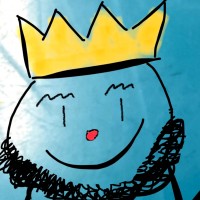Ask Singapore Homework?
Upload a photo of a Singapore homework and someone will email you the solution for free.

Question
Primary 4 | Maths
2 Answers Below
Anyone can contribute an answer, even non-tutors.

Please help. Thanks
total=47
tri: 1u
bi: 47-1u
wheels
total=115
tri: 3u
bi: 94-2u
94 + 1u = 115
1u = 21
21 tri
.
.
.
Bicycle has 2 wheels.
Assume all 47 are bicycles.
Number of wheels = 2 x 47
= 94
The number of wheels is too few since there are 115 in total.
We need to replace some bicycles with tricycles.
For every 1 bicycle that we replace with a tricycle, we are adding 1 more wheel to the total since tricycle has 3 wheels but a bicycle only has 2.
(3 - 2 = 1)
Number of wheels we must increase by
= 115 - 94
= 21
Number of bicycles that we need to replace
= 21 ÷ 1
= 21
This means that there were actually 21 tricycles in the first place.
See 2 Answers
We have to replace some bicycles with tricycles such that the number of cycles remains at 47 but the number of wheels increases.
For each bicycle that is replaced, there is an increase of 1 wheel
(Taking a bicycle away means 2 wheels are subtracted, but adding a tricycle in its place means adding 3 wheels. There is a net/overall increase of 1 wheel)
I know you have tried to explain the equation in the simplest of way to the student, but then again. the level gap is still too big.
Perhaps if you used "units" and "parts" instead of x and y, they might be able to absorb the terms better. But then again, if I recall, "units" and "parts" are used together only at the Primary 5 or at the Primary 6 level.
----------------------------------------------
A bicycle has 2 wheels.
A tricycle has 3 wheels.
Assume that all 47 cycles are bicycles.
Number of wheels for 47 bicycles
= 47 x 2
= 94
But there are 115 wheels. So, there cannot be 47 bicycles.
Replacing a bicycle with a tricycle keeps the number of cycles the same, but increases the number of wheels by 1.
To get 115 wheels, we need to add 21 wheels altogether. This means a total of 21 bicycles have to be swapped to tricycles, leaving behind 26 bicycles.
Therefore, there are 21 tricycles and 26 bicycles.
Check:
Number of wheels from tricycles
= 21 x 3
= 63
Number of wheels from bicycles
= 26 x 2
= 52
Total number of bicycles
= 63 + 52
= 115
The students at Primary 4 use the assumption method to solve such questions, often presented in a table format.









